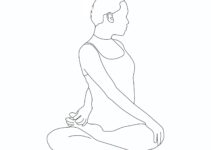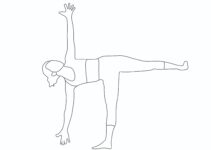What is Shatkarma purification?
The purification practices elaborated in the ancient text include hatha yoga pradipika, gheranda samhita, and ghata shuddhi practices. The term ghata means the physical body made of pancha mahabhutas. Shatkriyas is a cleansing practice that helps clean the body’s internal organs and systems. This helps in the alignment of prana, which in turn helps to connect the body and mind. As it deals with personal hygiene, Shatkriya is essential in the current COVID-19 pandemic.

Cleansing yoga
Shatkarma is made from 2 words, which means six, and karma, which means action. Hence, shatkarma is a form of action that will help purify the body.
The share karma can be classified on the following basis: –
- The cleansing mode includes air, water, friction, and manipulation movements.
- Region of cleansing: it includes naso –the pharynx -audio -cranial -region, gastro-oesophageal -region, and ano -recto -intestinal -region.
Why is cleansing yoga important?
Various health characteristics are mentioned in our ancient text; however, such chafeaturese missing in today’s generation. One must practice Yogic shodhan kriya or Shatkarma to avoid such functional deterioration. People ask how one can define the human body. One of the definitions that can be given for the human body is that it is the product of waste material or a factory of waste material. Whether a person eats or not, every 24-hour body produces impurities or mala. If the contaminant is less in the body, it will help increase each cell’s functioning. Hence, yogic shodhan kriyas are essential.
Yogic Shodhan Kriya in the ancient text
Gheranda Samhita mentioned the term Ghata Shuddhi, which means purification and fortifying the psychophysical unit. There are seven steps of the Ghata Shuddhi. i.e., shodhana, dridhata, sthairya, dhairva, laghava, prayasksha, Scripta.
Benefits of Shatkarma
- Increases vital person. • It is one of the essential detoxifyes that helps detoxify the body.
- Important in the treatment of many functional disorders.
- Kriyas directly influence the person’s autonomic nervous system, attitude, and value system.
- It also influences the endocrine and metabolic pathways.
- Important in the treatment of many functional disorders.
- Kriyas directly influence the person’s autonomic nervous system, attitude, and value system.
- It also influences the endocrine and metabolic pathways.
- Increases vitality in the person.
Type of Shatkarma
The six shatkarmas, or the purification practices, are as follows: –
- Dhauti (stomach wash)
- Basti (colon flushing)
- Neti (nasal douche and cleansing)
- Nauli (manipulation of abdominal muscles)
- Trataka (steady gaze)
- Kapalbhati (forceful rapid breathing)
What is Dhauti and its types?
Dhauti is of four types- antardhauti, dantadhauti, hriddhauti, and mulashodhana.
- Antardhauti: It includes vatasara, varisara, vahnisara and bahishkrita.
- Dantadhauti: It includes dantamula, juhvamula, karnarandhra and kapalrandhra.
- Hriddhauti: It includes danda dhauti, vamana dhauti and vastra dhauti.
- Mulashodhana: It includes cakrikarma and gabeshakriya
What is Basti and its types?
Basti is of two types:
- Jala basti: In Utkatasana, this water is sucked into the anus to cleanse the colon
- Sthala basti: In this, sit in pashimottanasana and perform ashwini mudra 25 times, sucking air into the bowels; retain it for some time and then expel it by practising basti; the appetite increases, the body glows, excess doshas are destroyed.
What is Neti and its types?
Neti is of two types:
- Jal neti: It is performed with a neti pot filled with lukewarm water with a pinch of added salt.
- Sutra neti: It is performed with a sutra wherein the sutra is inserted in one nostril and taken out of the mouth. Sutra neti stimulates the nerves and related brain functions of the eyes, tear ducts, and olfactory zone; it increases mucus briefly, flushing out the secretory glands and removing stagnation of the blood, increasing resistance to invasion by viruses.
What is Nauli and its types?
Nauli is of 4 types:
- Vam nauli: contracting the abdominal muscle to the left side.
- Dakshina nauli: contracting the muscles to the right side.
- Madhyama nauli: contracting the abdominal muscles to the centre.
- Nauli chalna: contracting and moving the abdominal muscles from the left to right side and vice versa.
What is Trataka and its types?
It means continuous and steady gazing. Trataka is of two types: –
- Bahya trataka: This practitioner is supposed to focus on the flame of a diya or candle.
- Antar trataka: In this practice, the practitioner should retain the image between the eyebrow centre for as long as possible.
What is Kapalbhati and its types?
Kapalbhati has two words: kapal, the forehead or skull, and bhati, the shining. Hence, kapalbhati implies a practice that brings the shining to the forehead.

Kapalbhati is of three types: –
- Vatakrama: The term vata means the air. The principle used in this practice is active exhalation and passive inhalation. The practitioner should focus on exhalation, and inhalation will happen automatically.
- Vyutkrama: This practitioner should intake the water from the nose and then expel it from the mouth.
- Shitkrama: In this, the practitioner should intake the water from the mouth and then expel it from the nose.
Shatkarma is a yogic way to clean the body from the inside and eliminate the impurities in the internal organs. He who longs to have good health must put forth some effort to achieve it. One can achieve anything with a will, plan, and execution.





